Hello again!
As you can read in our previous post about the Construction and Outfitting of the Titanic, we have been interested in anything related to the Titanic for over a long time, and this is part 2 in a series of posts about the RMS Titanic.
Disclaimer: We don’t pretend to be the best source in the world about the Titanic, or know everything about the voyage from the Titanic. There are many sources to be found on the internet, and if this post does not suit you, you are welcome to find better sources out there. Just a warning though, that many sites might give many different information that you have to wade through (as we found out in our previous post to our shame). Anyway, let’s get underway with:
Titanic’s Maiden Voyage
The Titanic left Southampton at 12:15 p.m. on April 10th 1912, for her maiden voyage to New York, USA. 922 Passengers were recorded as having embarked at Southampton.
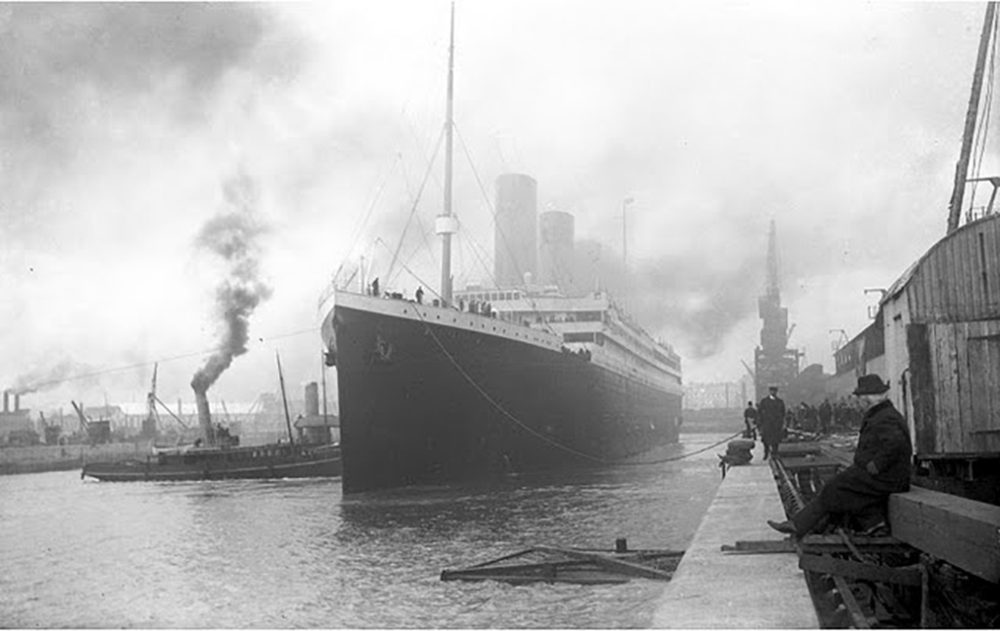
It took 6 tugboats to get her on her way.
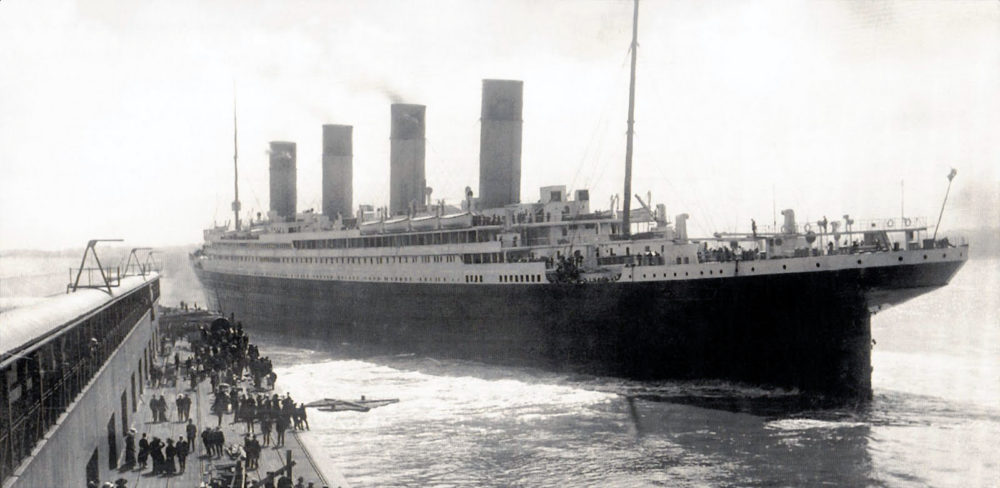
All tugs were from Southampton, Isle of Wight and South of England Royal Mail Steam Packet Limited Company.
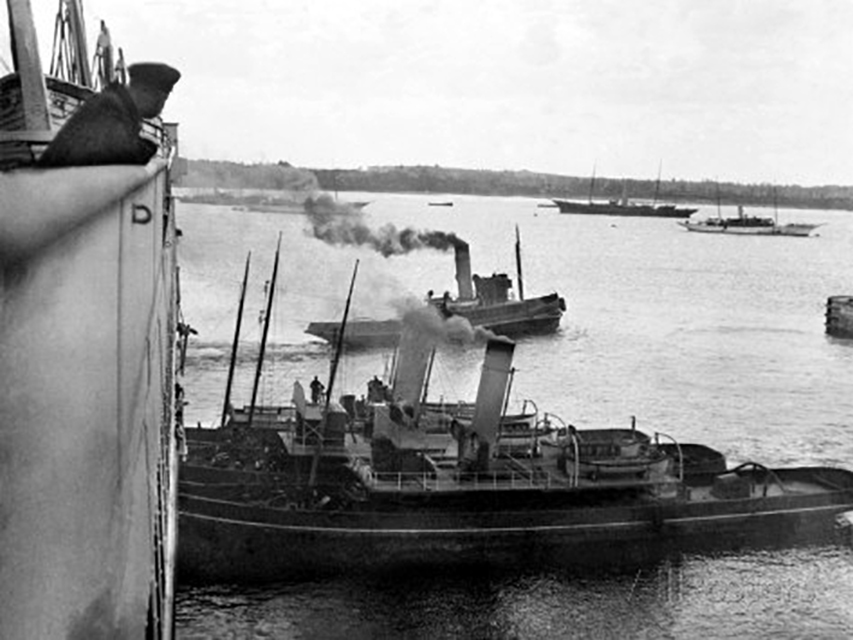
During her departure, she almost collided with the SS New York.
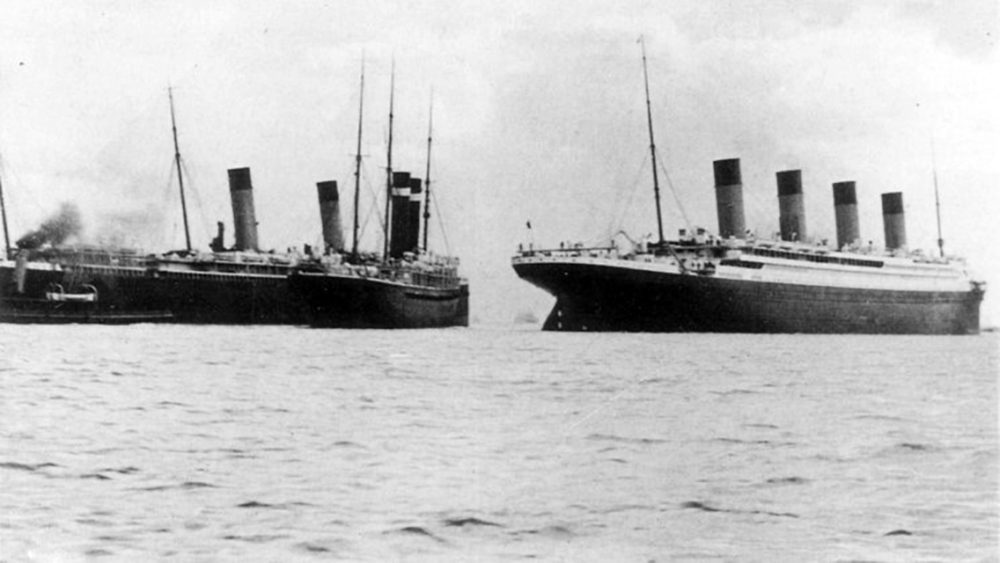
The SS New York was torn from her moorings when the much larger Titanic passed by, creating a suction effect.
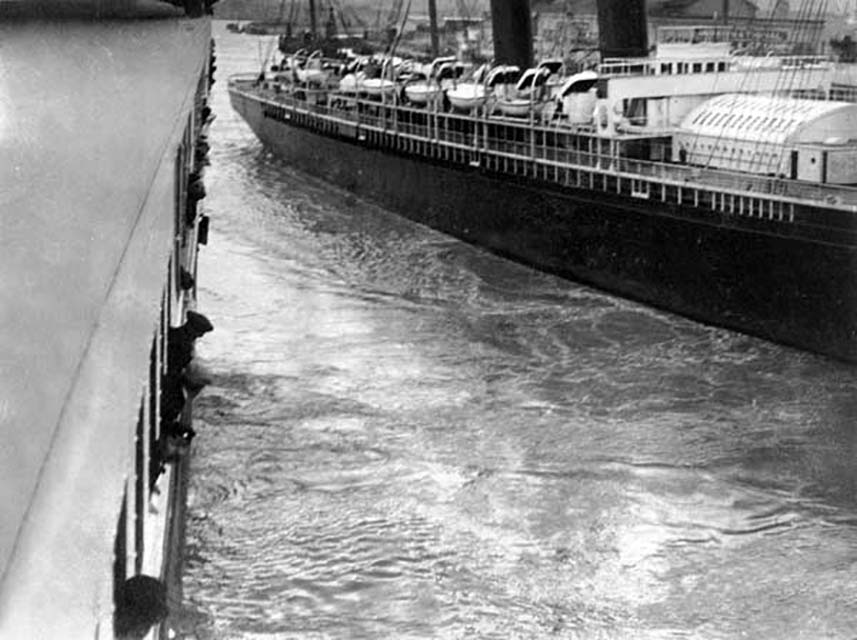
A collision was avoided when the Titanic’s captain, ordered the port propeller to reverse, while a nearby tugboat towed New York in the opposite direction.
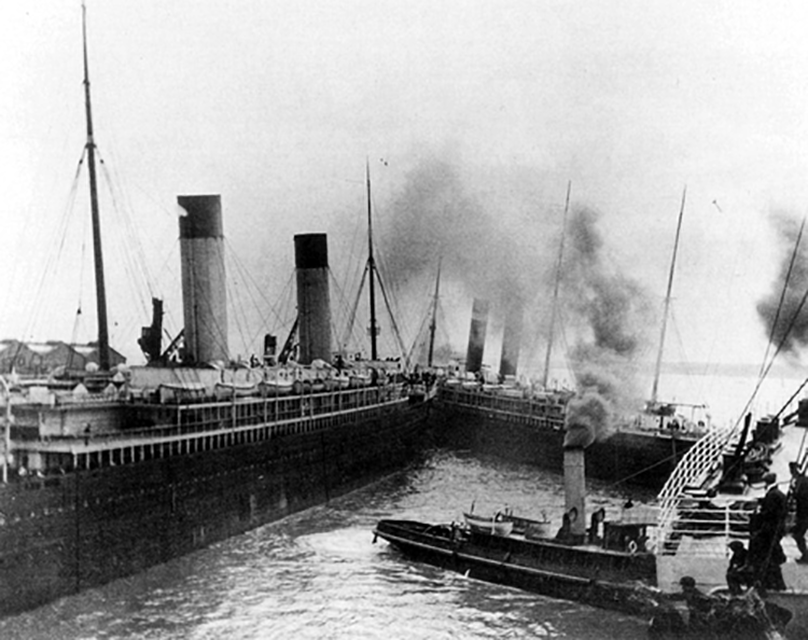

After her near collision, she was of to Cherbourg, France.
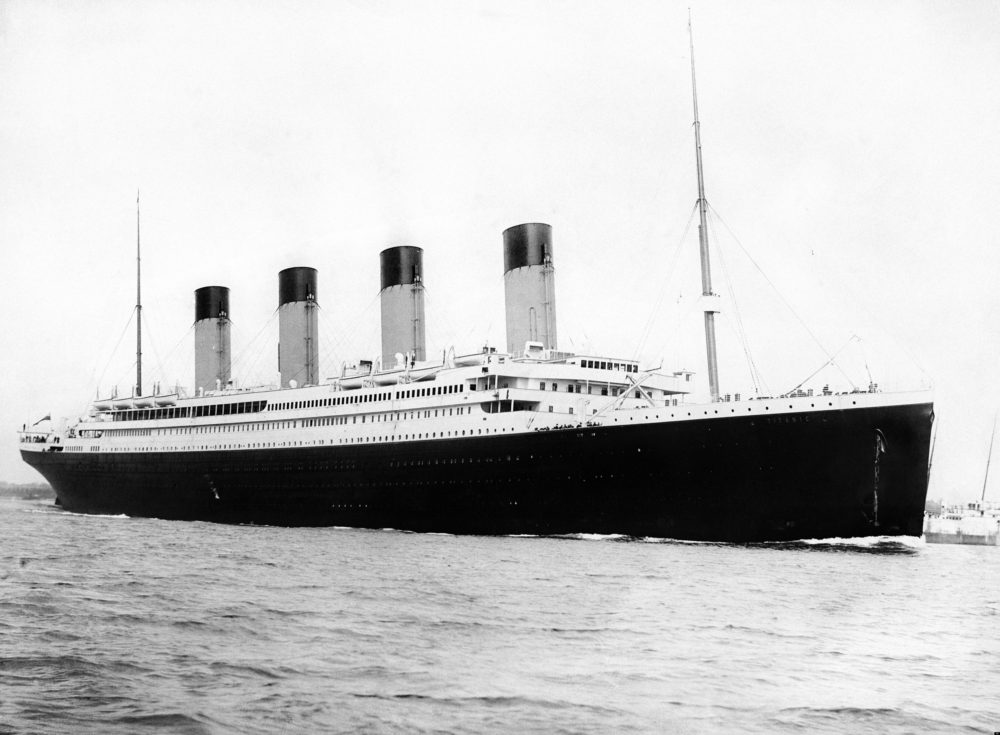
On April 10th 1912 at 6.35 p.m, the Titanic dropped her anchor near to the Central fort in Cherbourg. 281 Passengers were transferred to the Titanic using the White Star Line tenders, Nomadic and Traffic.
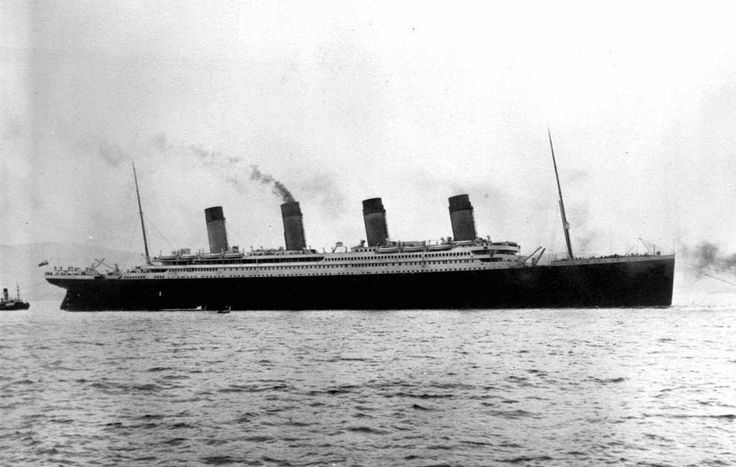
After a 1,5 hour stopover in Cherbourg, the Titanic left for Queenstown, Ireland, and arrived there at 11:30 AM, April 11th.
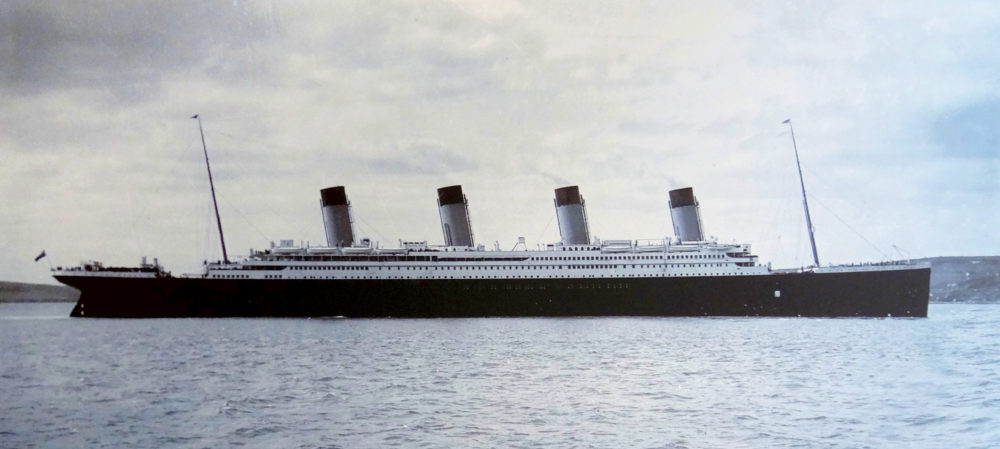
At Queenstown (now Cobh), Ireland, She picked up her last 120 passengers, while 7 passengers debarked.
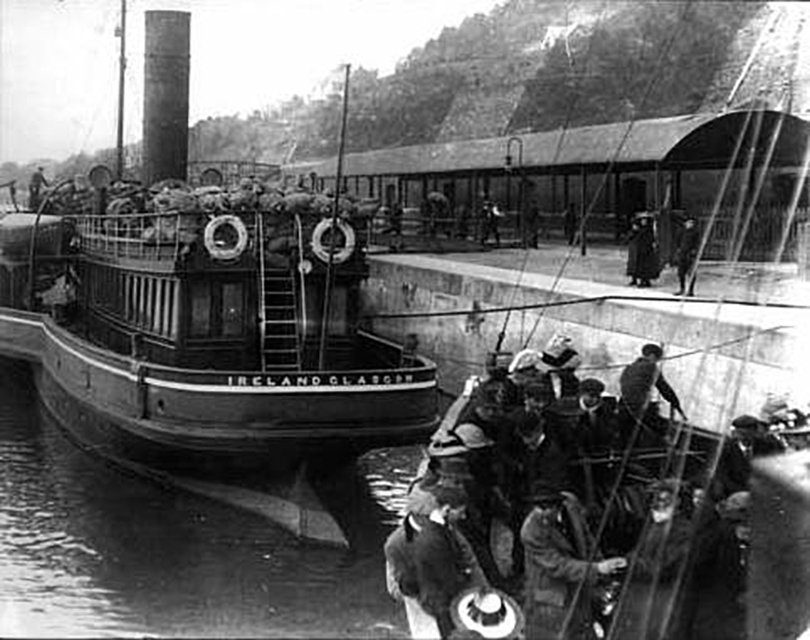
One of her stokers also debarked, by hiding underneath several mail bags returning to shore

Besides transferring passengers, the 2 tenders, “Ireland” and “America”, also transferred the latest mail to be shipped.
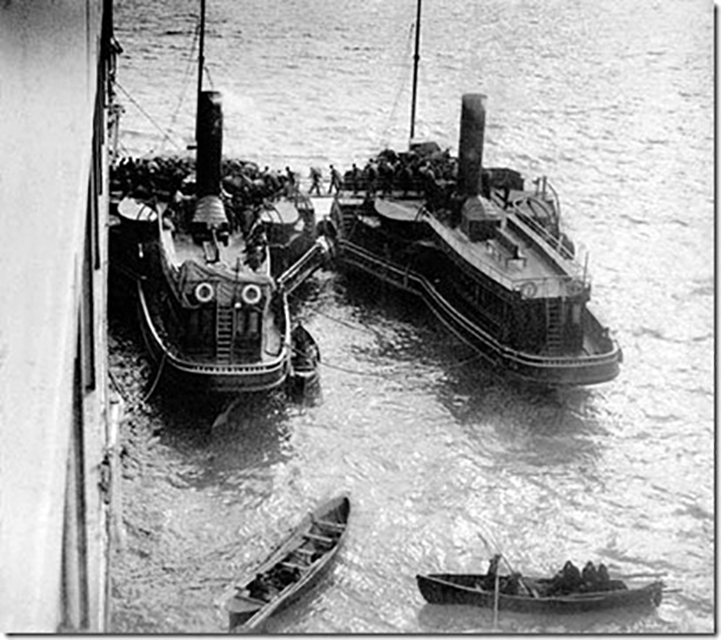
The Royal Mail Ship (RMS) Titanic, carried 3,423 bags of mail. The mailbags contained over 7 million pieces of mail.
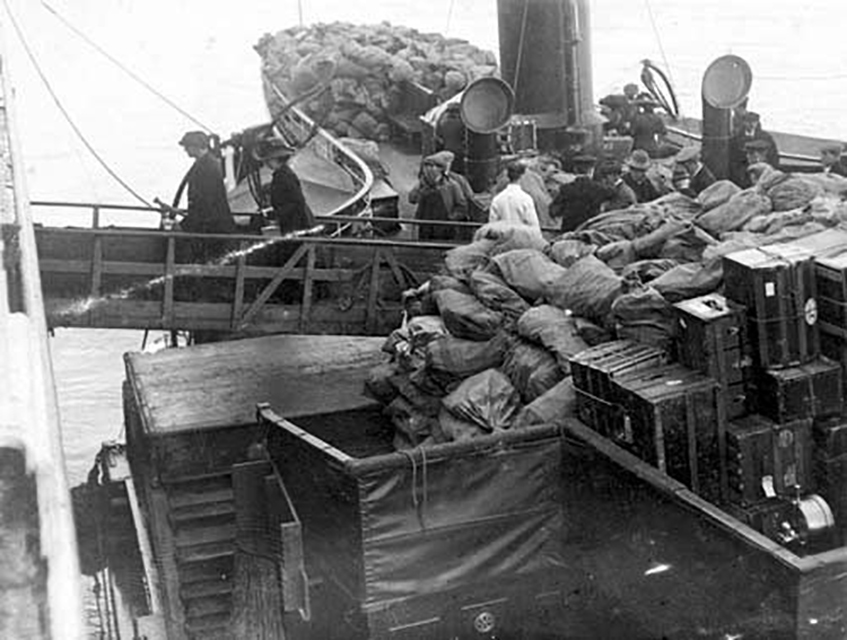
At 1:30 p.m. April 11th, the Titanic leaves Queenstown and heads across the Atlantic for New York.
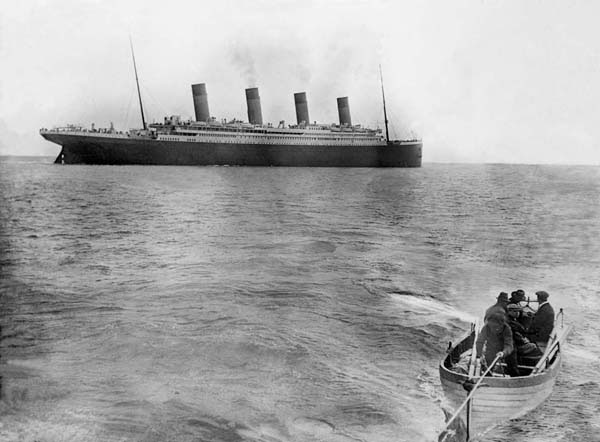
There were around 899 crew members, and around 1,324 passengers on board of the Titanic on her maiden voyage.
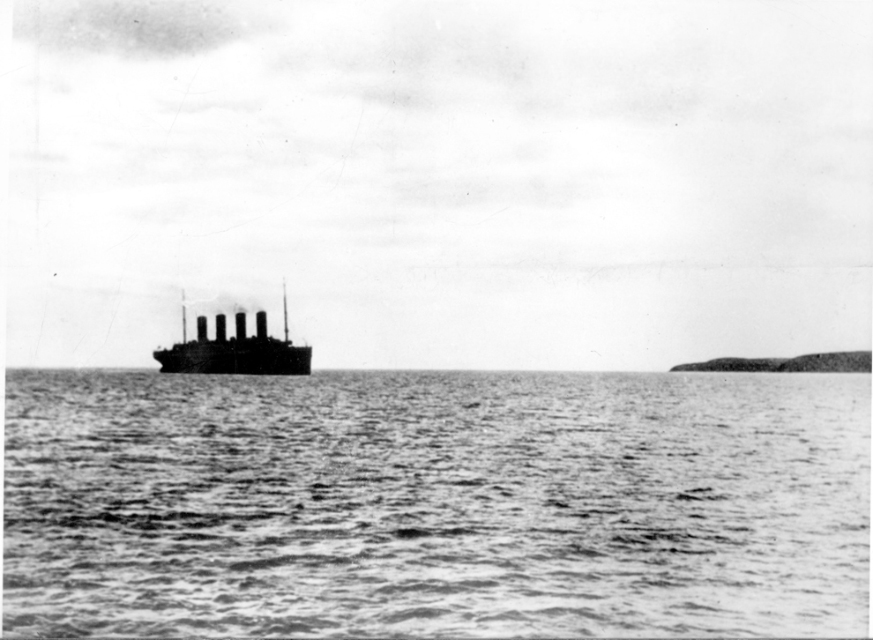
During her voyage to New York, passengers enjoyed nice walks on the boat deck.
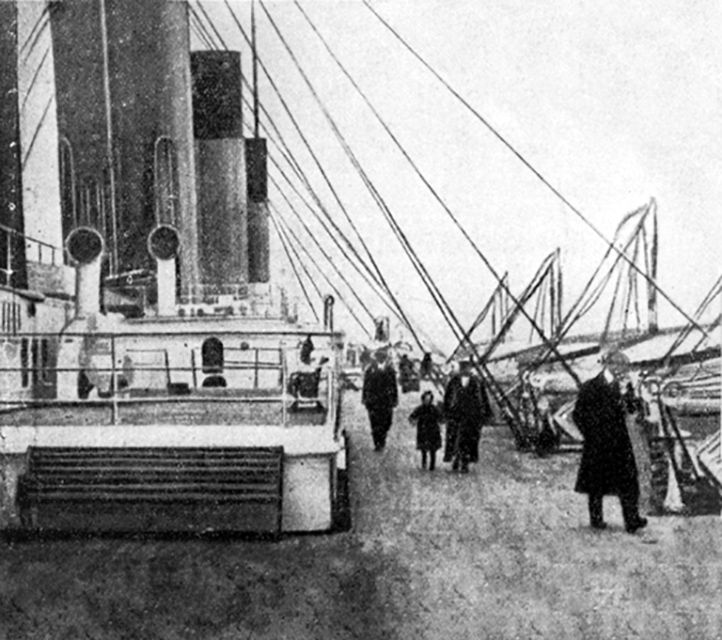
Or played with a spinning top for a small audience.
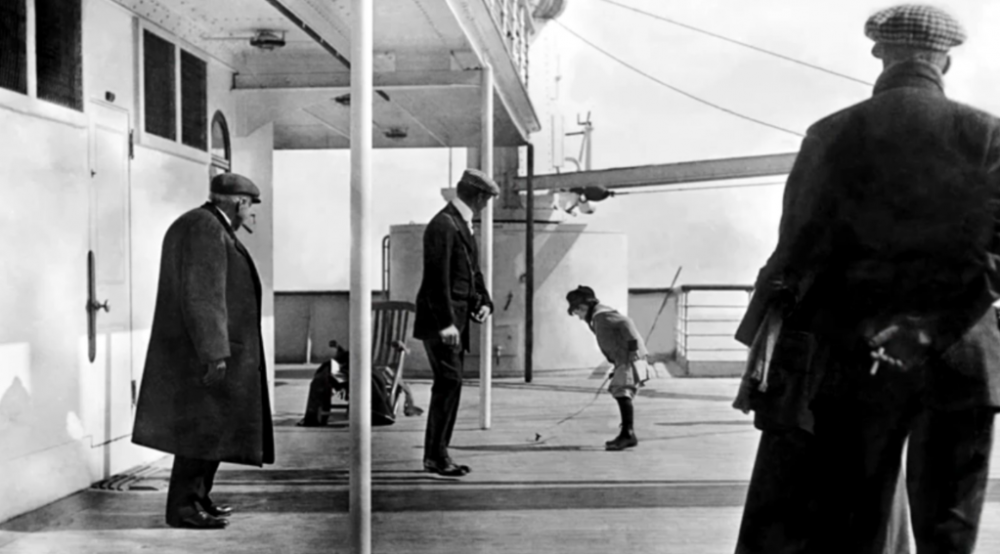
Some passengers, just enjoyed the view from the Titanic.
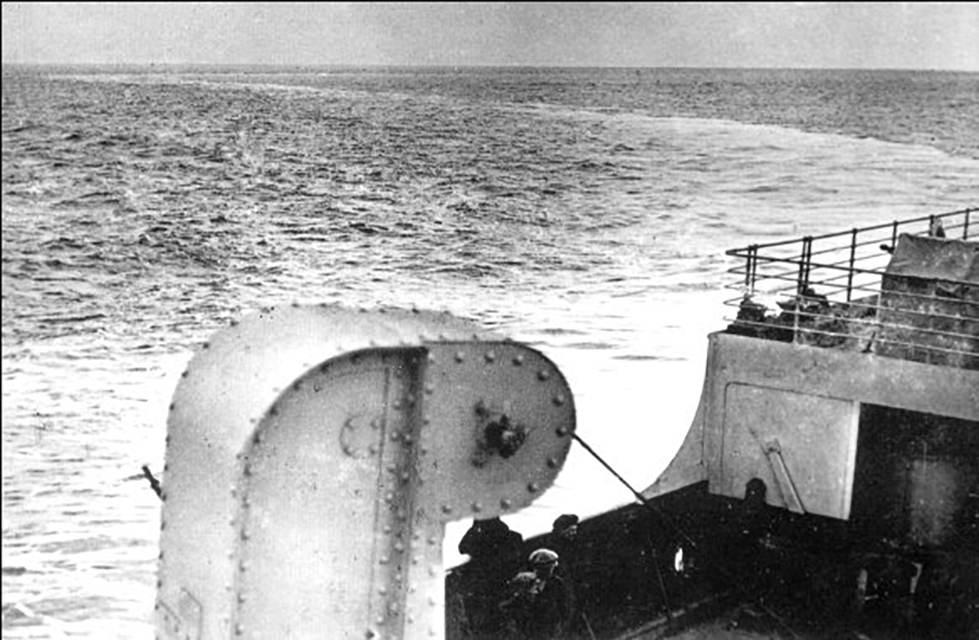
While others, just took in the sights and sounds from the Titanic.
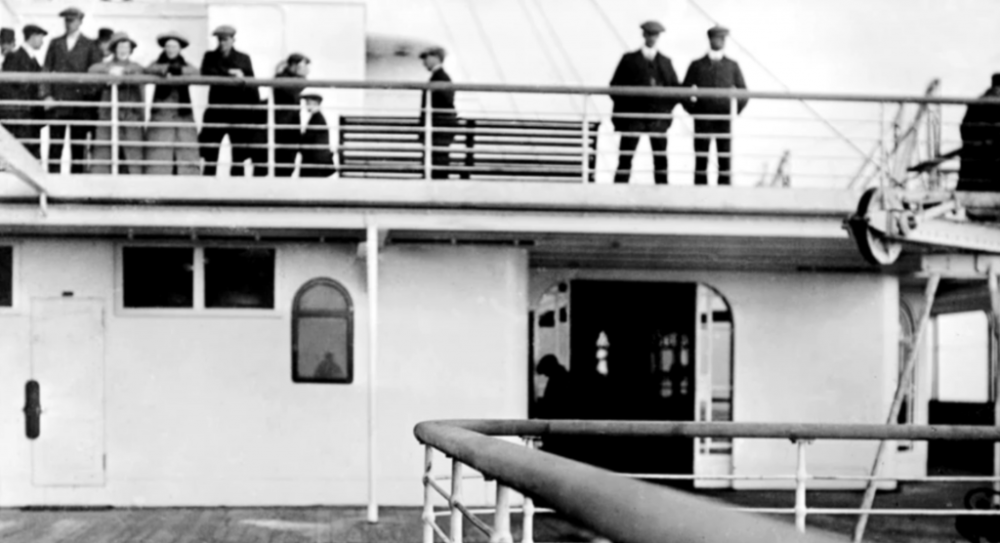
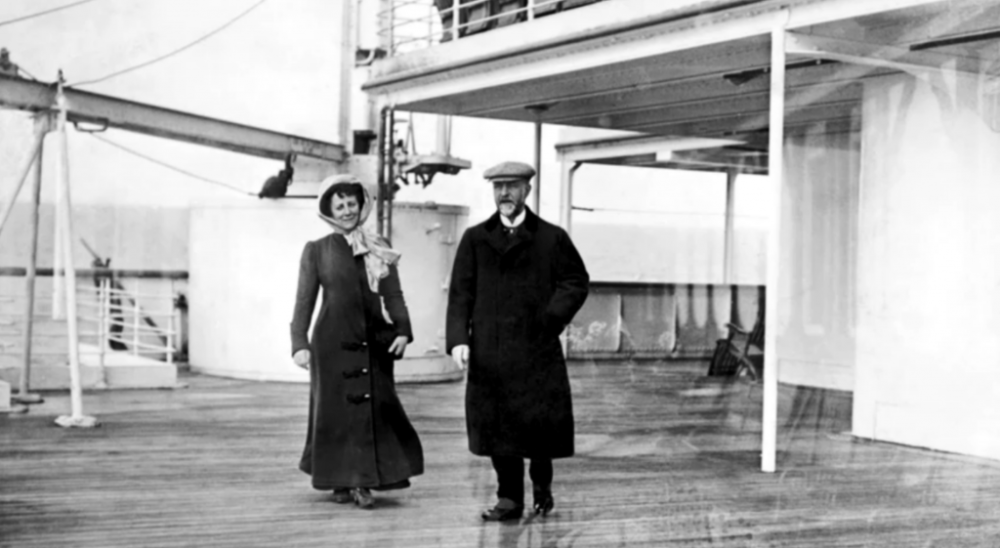
The more sportive passengers, went to the gymnasium, and used the rowing machine, and electric horse to stay in shape.
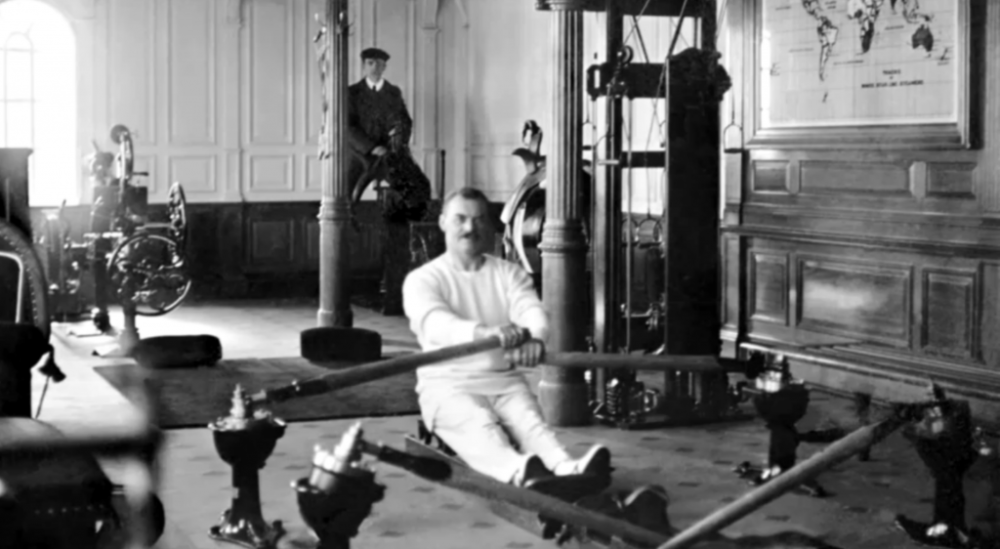
Or they took turns riding the exercise bikes.
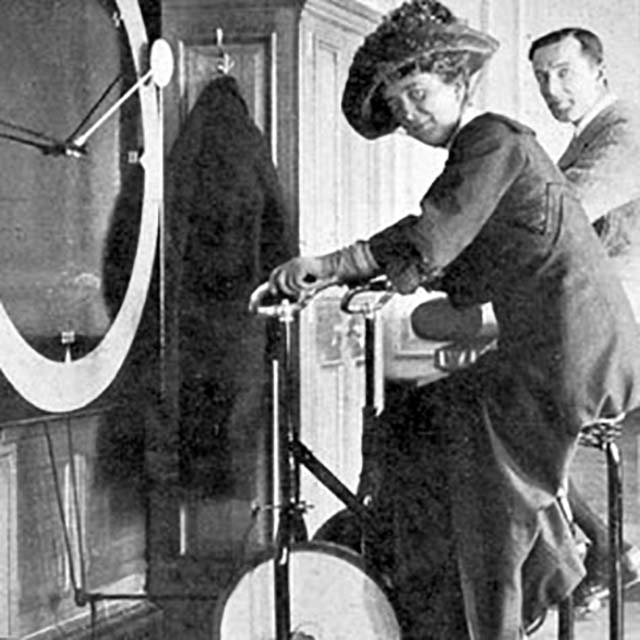
Some crew members were always on watch.
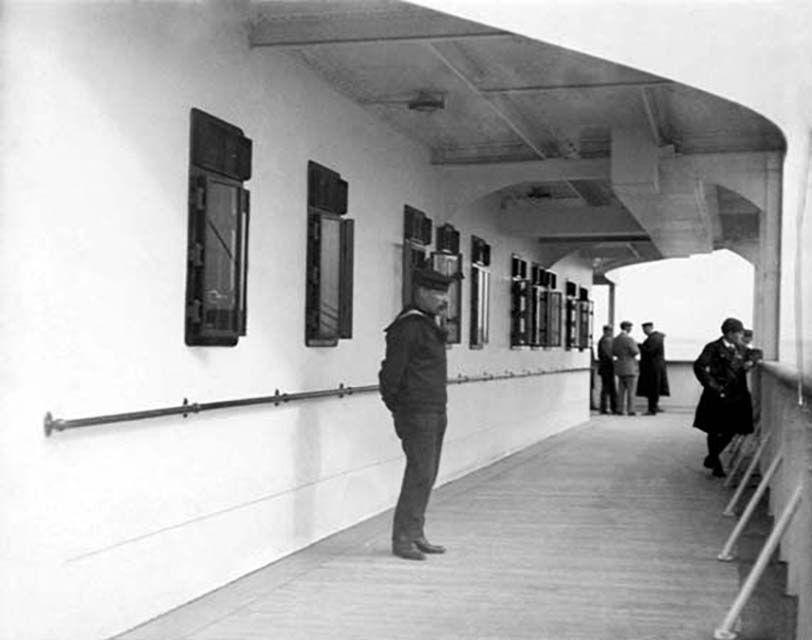
But even Captain Edward J. Smith, and Purser Hugh Walter McElroy, took a break from work now and then.
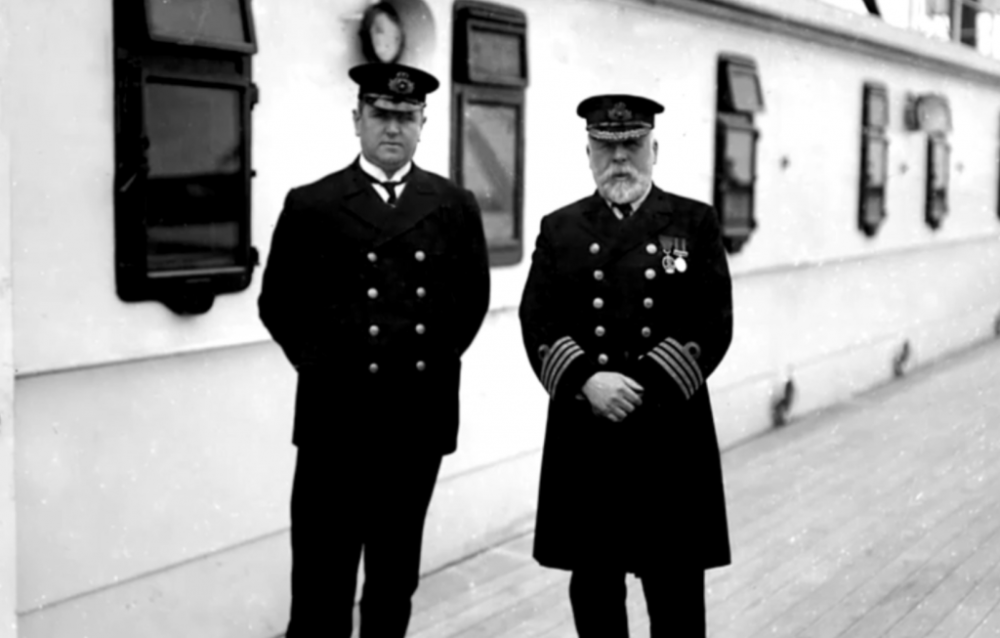
In the evenings, the passengers enjoyed a nice meal on board.
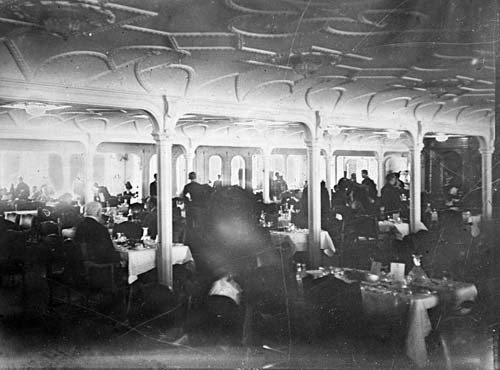
At 9.00 am, on April 14th, the Titanic received its first warning of Ice, from the RMS Caronia. The message was received, and put on the notice board on the bridge by Captain Edward J. Smith, for his officers to read. “Westbound steamers report bergs growlers and field-ice in 42N from 49 to 51 West April 12th”
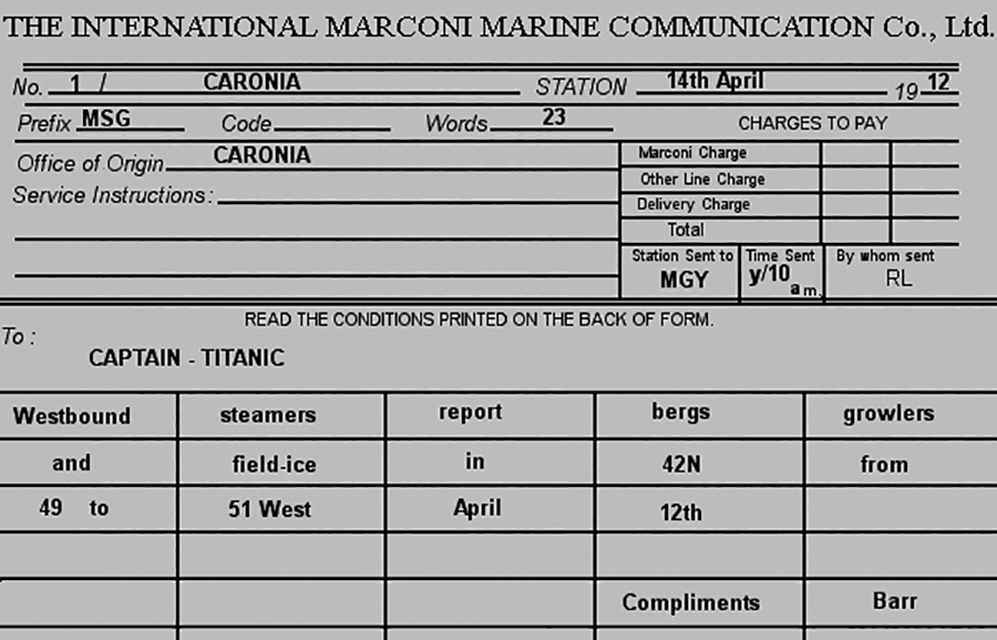
At 1.42 pm, on April 14th, the Titanic received its second warning of Ice, from the SS Baltic. The message was received, and put on the message board in the chartroom by Captain Edward J. Smith, at 7.15 pm. “Greek steamer Athenia reports passing icebergs and large quantities of field ice today in latitude 41° 51′ N, longitude 49° 52′ W. Wish you and Titanic all success. Commander.”
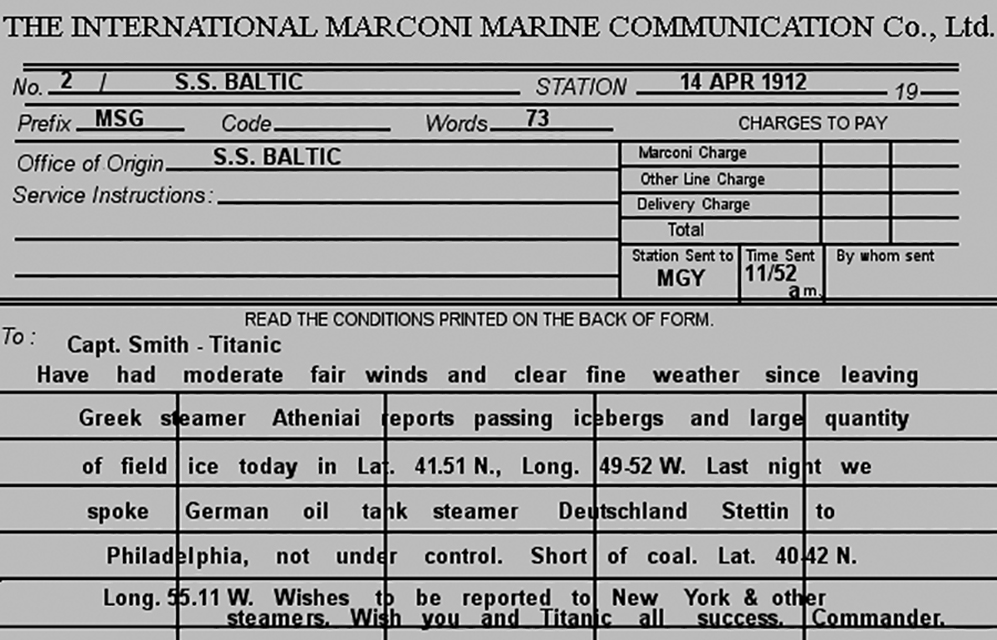
At 1.45 pm, on April 14th, the Titanic overheard an Ice warning, sent from the SS Amerika to the US Hydrographic Office – Washington. The message was received, but never relayed to the Officers on the bridge. “Amerika passed two large icebergs in 41 27N 50 8W on April 14”
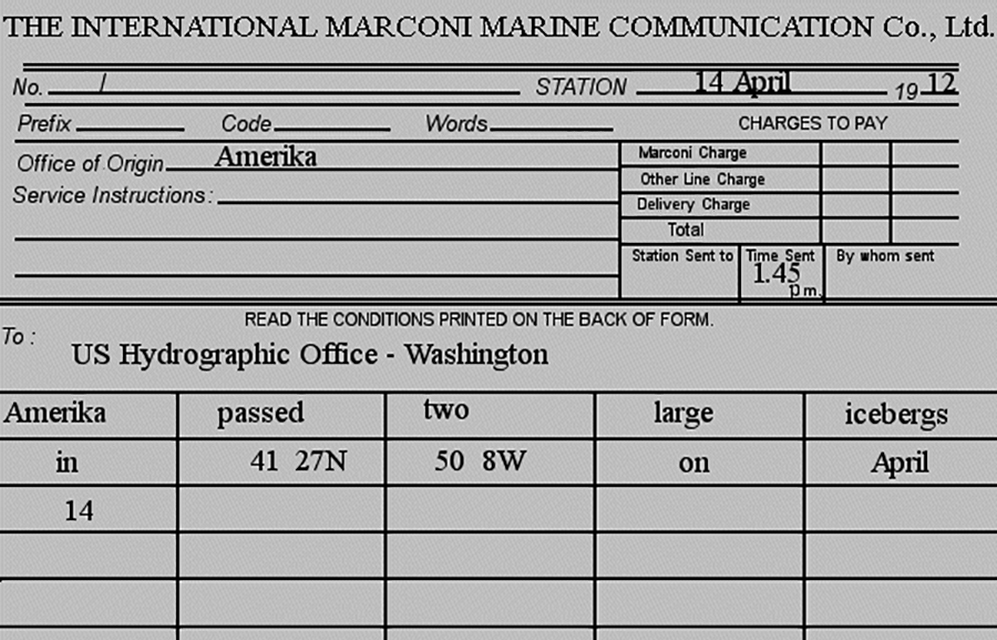
At 7.35 pm, on April 14th, the Titanic overheard an Ice warning, sent from the SS Californian to the Captain of the SS Antillian. The message was received, and sent to the bridge, but Captain Edward J. Smith never got to see it, because he was having diner. “6.30 p.m. AST. Lat. 42.3 N., Long. 49.9 W. three large bergs five miles to southward of us. Regards Lord.”
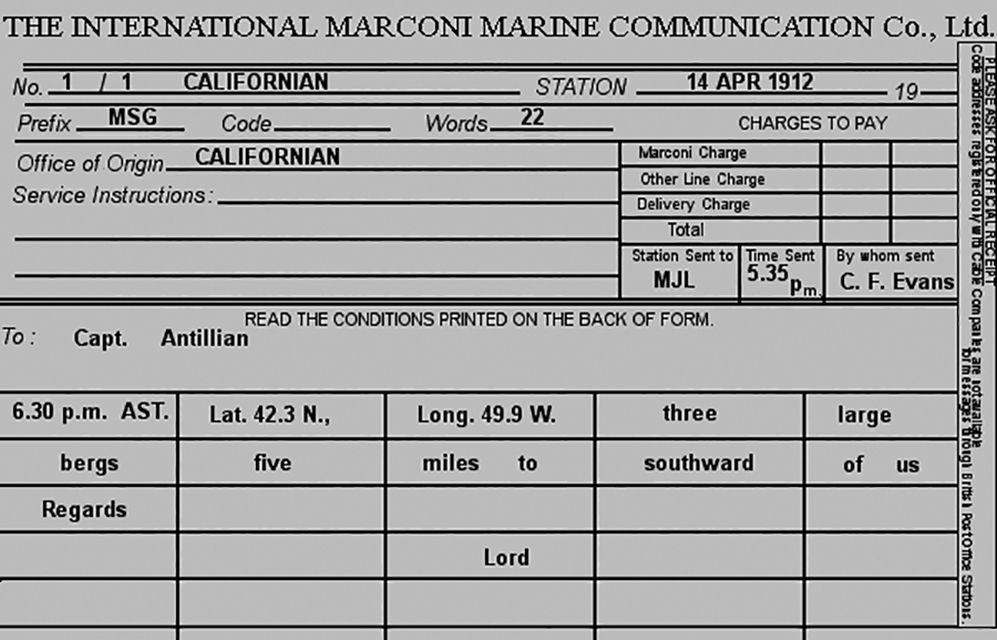
At 9.40 pm, on April 14th, the Titanic received an ice warning, from the SS Mesaba. The message was received, but never reached the bridge, because radio operator Jack Phillips was busy transmitting messages for passengers. “From ‘Mesaba’ to ‘Titanic.’ In latitude 42 N. to 41.25, longitude 49 W. to longitude 50.30 W., saw much heavy pack ice and great number large icebergs, also field ice, weather good, clear.”
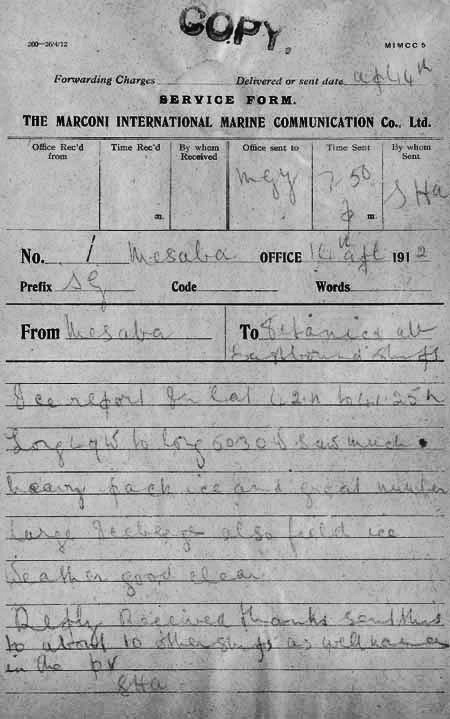
At 11.05 pm, on April 14th, the Titanic received her last Ice warning, from the SS Californian. “We are stopped and surrounded by ice”. The message was received, but Jack Phillips was busy transmitting messages for passengers, so he replied: Shut up. I am busy. I am working Cape Race.
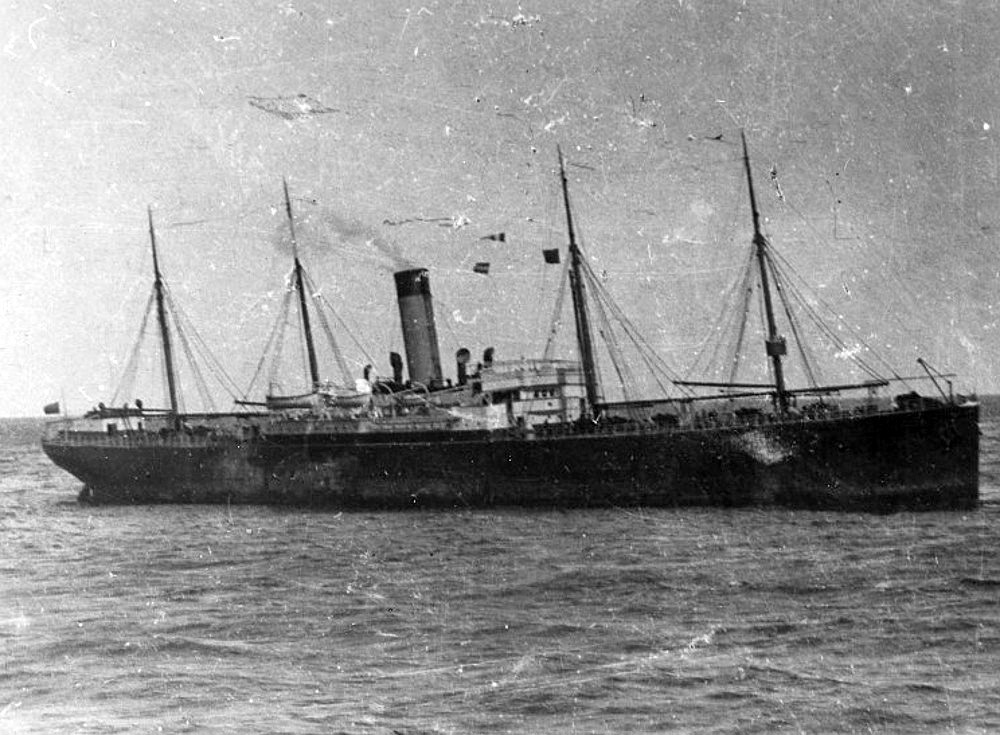
This concludes the final voyage part of the Titanic. In the next post we will focus on the last moments of the Titanic. We hope you enjoyed this post, and if you did, feel free to leave a nice and civil reply.
